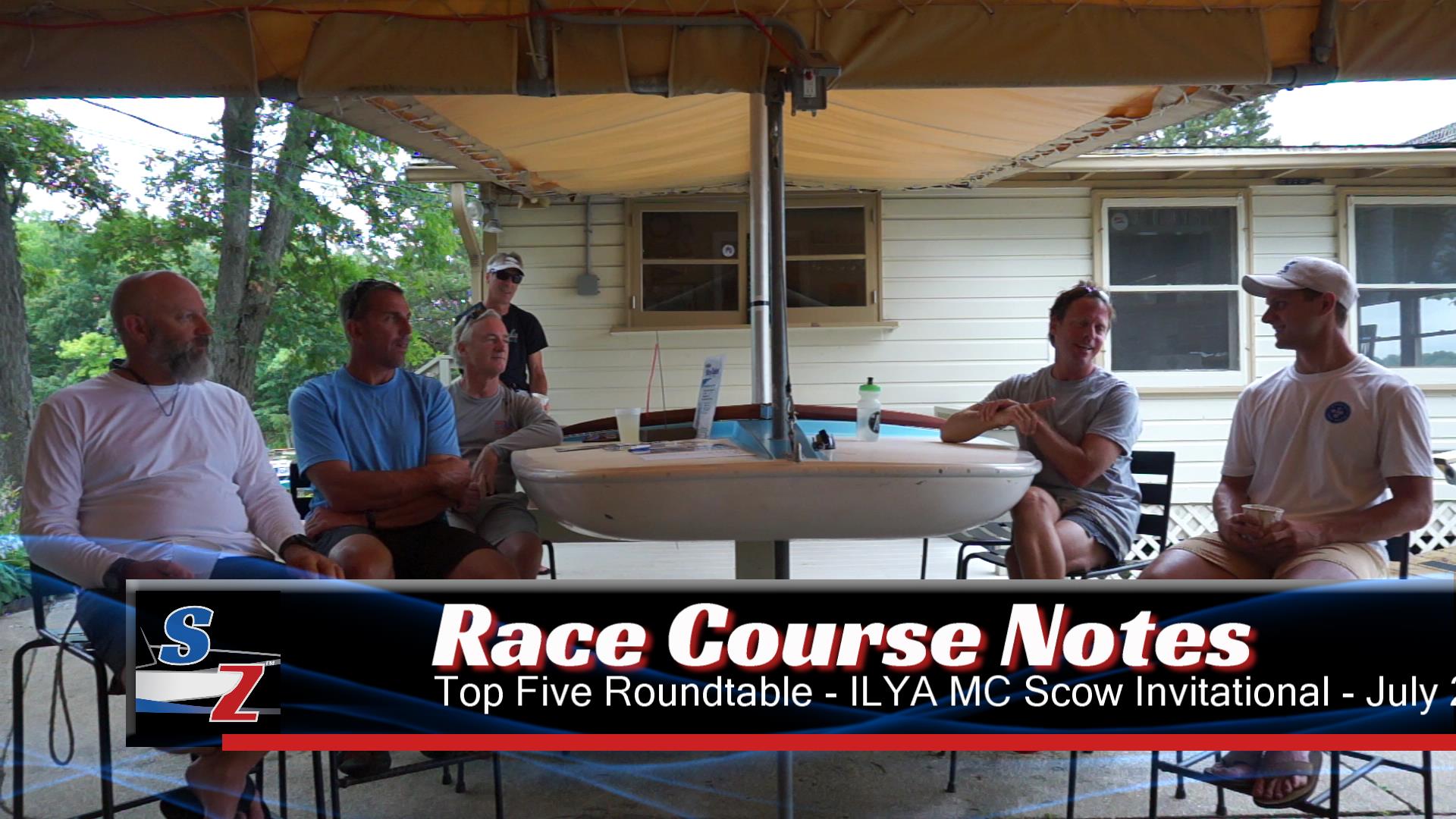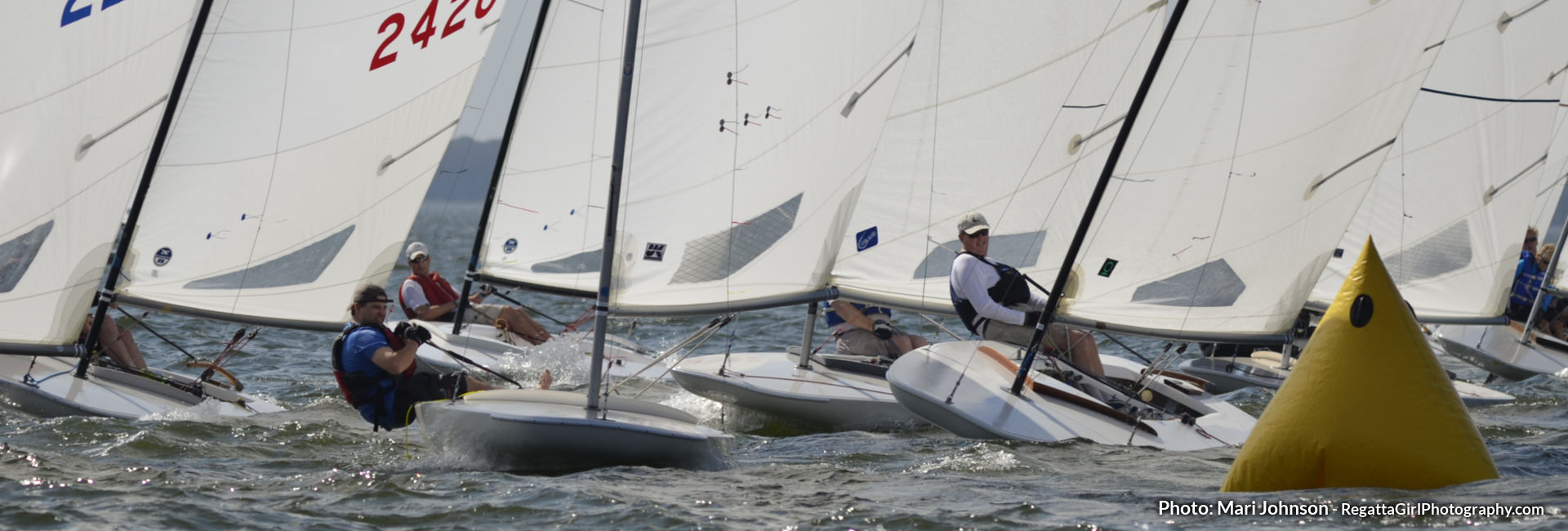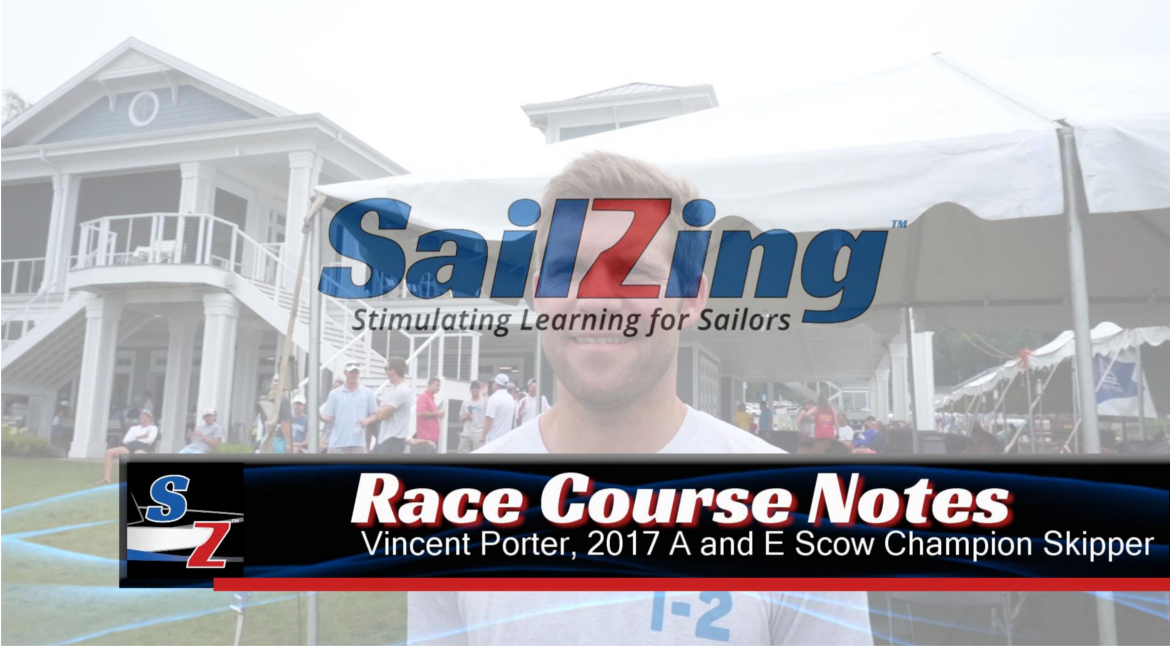SailZing captured the top five finishers on video as they share race course notes at the ILYA MC Invitational, held at Nagawicka Lake Yacht Club in July 2018.
The competition was tough, with shifty winds and varying velocity. Thanks to the top five sailors and a few other sages for sharing their knowledge:
- Bill Colburn, Lake Harriet – 1st place
- Ryan Grosch, Lake Harriet – 2nd place
- Dan Guidinger, White Bear Lake – 3rd place
- Vince Driessen, Gull Lake – 4th place
- Dan Quiram, Pewaukee Lake – 5th place
- Peter Keck, multiple C Scow national champion – observer
- Mark Tesar, Clear Lake
- Eric Hood, Melges Performance Sailboats
Keys to Success (beginning of the video to 10:40)
#1 – Pay attention to the top of the fleet; sail conservatively
- Where is the top of the fleet going and why? Stay with them unless you have a good reason not to.
- Don’t blindly follow a plan; be ready to adapt to changing conditions.
#2 – Get a good start in clear air
- Avoid the crowds at the “favored” end.
- Use a line sight.
- Get your bow ahead of your neighbors.
#3 – Stay in breeze and on the lifted tack
- If there are big velocity variations, sail to the breeze.
- Sail the course before the race to learn the variations in sailing angles. Remember these and stay on the lifts during the race.
#4 – Keep your boat moving
- Get a feel for when you have good speed.
- Don’t pinch.
- Check boat speed against your neighbors. If you’re not fast, match their pointing, angle of heel and sail trim.
#5 – Stay mentally sharp and reduce distractions
- Hydrate. Replace fluids and electrolytes.
- Get prepared before you go out: reduce clutter and weight in the boat, apply sunscreen, arrange gear, etc.
Bad Race Lessons Learned (10:43 to 15:26)
All but one of the top five had a race finish outside the top ten. Here are three lessons learned.
- Bill Colburn – watched Dan Guidinger port tack the fleet right after the start and didn’t react by tacking to port.
- Dan Quiram – saw a big line of wind on the left and didn’t get over to it.
- Vince Driessen – didn’t notice that boats to windward were lifting above him.
Thought Process During a Race (15:26 to 25:03)
We asked each sailor if they had a mental checklist or thought process during a race.
- Bill Colburn – Plan is to start in the middle with clear air and then adapt to changing conditions. He call this a “no plan” approach.
- Ryan Grosch – Practice boat handling and speed on your own so these become more automatic. Then spend the race with your head out of the boat, looking at the other sailors, looking for breeze and staying on the lifted tack. He looks at the boats behind to make sure they won’t overtake.
- Dan Quiram – listens to the sound of his bow wave to make sure he’s going fast and then looks around.
- Vince Driessen – gets prepared before the race and eliminates distractions. Then looks around and adapts.
- Dan Guidinger – gets line sight and tries to follow the same procedure before the start. During race, looks around for pressure and next shift.
- Peter Keck – You need to be ready to adapt to changing conditions, but it’s OK to have a plan based on whether the wind is oscillating, shifting persistently, or has a regular pattern, such as fresh puffs from one direction.
Questions from the Audience
Benefits and technique for staying above the starting line in the pre-start period (25:03 on video)
Mark Tesar responded to this question.
Technique
- Sail around above the line from the warning until about 2:00 to 1:30 before start.
- Then head down toward your selected starting location and spin and tack into position.
- Most sailors will not be close enough to the line at 1:30 to affect your ability to sail down across the line and find a spot.
Benefits
- Better able to see what’s coming down the course to decide where to start.
- Easier to see holes in the starting line.
- Less traffic to allow you to get to your chosen location.
Top Tip for Back-of-the-Pack Sailors (29:10)
Eric Hood responded to this question
- Match angle of heel with the fast sailors and keep it constant.
- Match pointing direction (bearing) with top sailors.
- Find the right mainsail trim – there is about a 1 foot range for the correct trim upwind.
Related Content:
Get Your Head out of the Boat!
Upwind Strategy and Tactics – Sail in Clear Air
Race with Consistency – Ted Keller Comments
Sailors Helping Sailors
Will you share your knowledge with your related Comments below?





